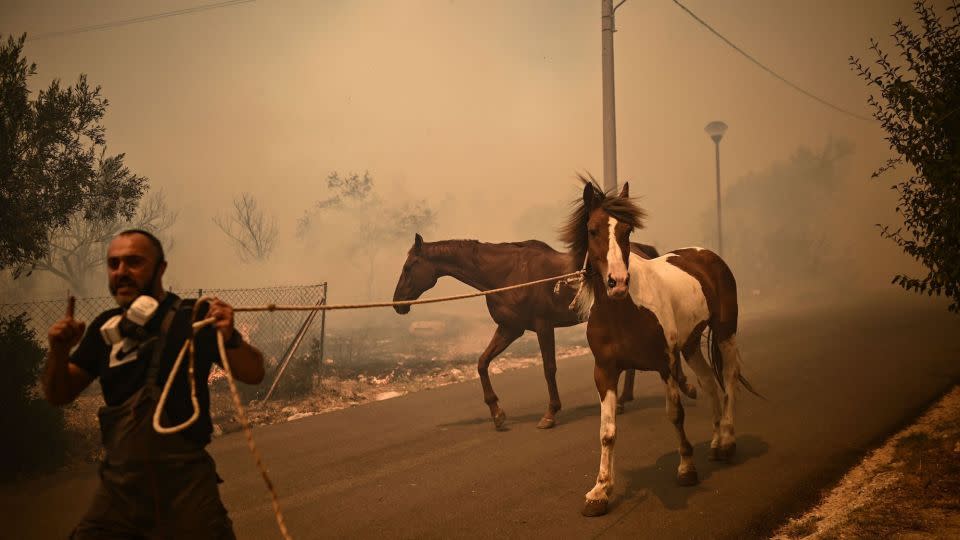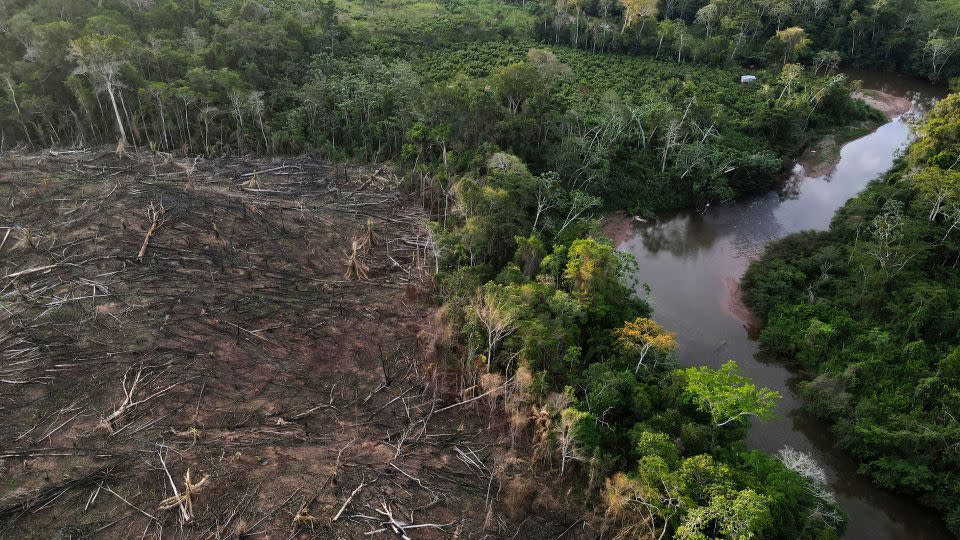Conditions on Earth may be moving outside the ‘safe operating space’ for humanity, according to dozens of scientists
Human actions have pushed the world into the danger zone on several key indicators of planetary health, threatening to trigger dramatic changes in conditions on Earth, according to a new analysis from 29 scientists in eight countries.
The scientists analyzed nine interlinked “planetary boundaries,” which they define as thresholds the world needs to stay within to ensure a stable, livable planet. These include climate change, biodiversity, freshwater and land use, and the impact of synthetic chemicals and aerosols.
Human activities have breached safe levels for six of these boundaries and are pushing the world outside a “safe operating space” for humanity, according to the report, published on Wednesday in the journal Science Advances.
The nine boundaries, first set out in a 2009 paper, aim to establish a set of defined “limits” on changes humans are making to the planet – from pumping out planet-heating pollution to clearing forests for farming. Beyond these limits, the theory goes, the risk of destabilizing conditions on Earth increases dramatically.
The limits are designed to be conservative, to enable society to solve the problems before reaching a “very high risk zone,” said Katherine Richardson, a professor in biological oceanography at the University of Copenhagen and a co-author on the report.
She pointed to the unprecedented summer of extreme weather the world has just experienced at 1.2 degrees Celsius of global warming. “We didn’t think it was going to be like this at 1 degree [Celsius]” she said. “No human has experienced the conditions that we’re experiencing right now,” she added.

Of the three boundaries that scientists found are still within a safe space, two of them – ocean acidification and the amount of aerosols in the atmosphere – are moving in the wrong direction.
There is some good news, however. The ozone layer was on the wrong side of the boundary in the 1990s, Richardson said. But thanks to international cooperation to phase out ozone-depleting chemicals, it is on track to recover completely.
A ‘stark warning’
Crossing planetary boundaries does not mean the world has reached a disastrous tipping point. Hitting one does not mean “falling off a cliff,” Richardson said. But it is a clear warning signal.
She used the analogy of a bank account, where the currency is not money, but rather the Earth’s resources which humans, like all living organisms, use to survive. As humanity crosses planetary boundaries, our “bank balance” is going down, she said.
“We can party, even though our money in the bank is getting less – we just can’t party forever. That’s the situation that we have brought ourselves into,” she said.
The significance of the planetary boundaries model is that it doesn’t analyze climate and biodiversity in isolation, the report authors said. Instead, it looks at the interaction of both, as well as a host of other ways humans are affecting the planet. Breaching one boundary is likely to have knock-on effects for others.
Razing the world’s forests, for example, has huge climate impacts. “We most likely cannot achieve the climate goals that the international community has adopted without, at the same time, respecting a limit for deforestation,” Richardson said.

Simon Lewis, a professor of global change science at University College London in the UK, who was not involved in the research, said the report provides “a strikingly gloomy update on an already alarming picture.”
“Humans are destroying biodiversity, changing the climate and polluting our home to such an extent that we’ve pushed our planet out of the stable conditions that enabled human civilizations to emerge,” he told CNN. “It couldn’t be a more stark warning,” he added.
Andrew Fanning, a visiting research fellow at the University of Leeds in the UK, also not involved in the report, said the planetary boundaries model provides “strong evidence-based support” to policymakers and others to help transform economies and societies to tackle the climate crisis.
But there are criticisms of the model.
Raymond Pierrehumbert, a physics professor at Oxford University, said planetary boundaries is useful where there is a clear basis for choosing a boundary, like carbon pollution.
But for other factors, such as land use change, “it can be a distraction to argue over where to put the boundary and whether or not it has been ‘exceeded,’” he told CNN.
“It is a heroic attempt to simplify the world, but it is probably too simplified to be of use in practically managing our many environmental problems,” Lewis said.
Stuart Pimm, the Doris Duke chair of conservation ecology at Duke University, who co-authored a critical paper about planetary boundaries in 2018, went further.
“The measures they use make no sense and they cannot estimate them,” he told CNN.
The challenge of data and monitoring is something Richardson recognizes. “We need more comprehensive data collection and collation in order to be able to monitor the effects of humans on the ecosystem,” she said.
This report is the third update on the planetary boundaries framework. The previous was published in 2015.
“What scares me is that transgression is increasing for all of the boundaries that were found to be transgressed in 2015,” said Richardson, who added, “this isn’t getting better.”
For more CNN news and newsletters create an account at CNN.com

